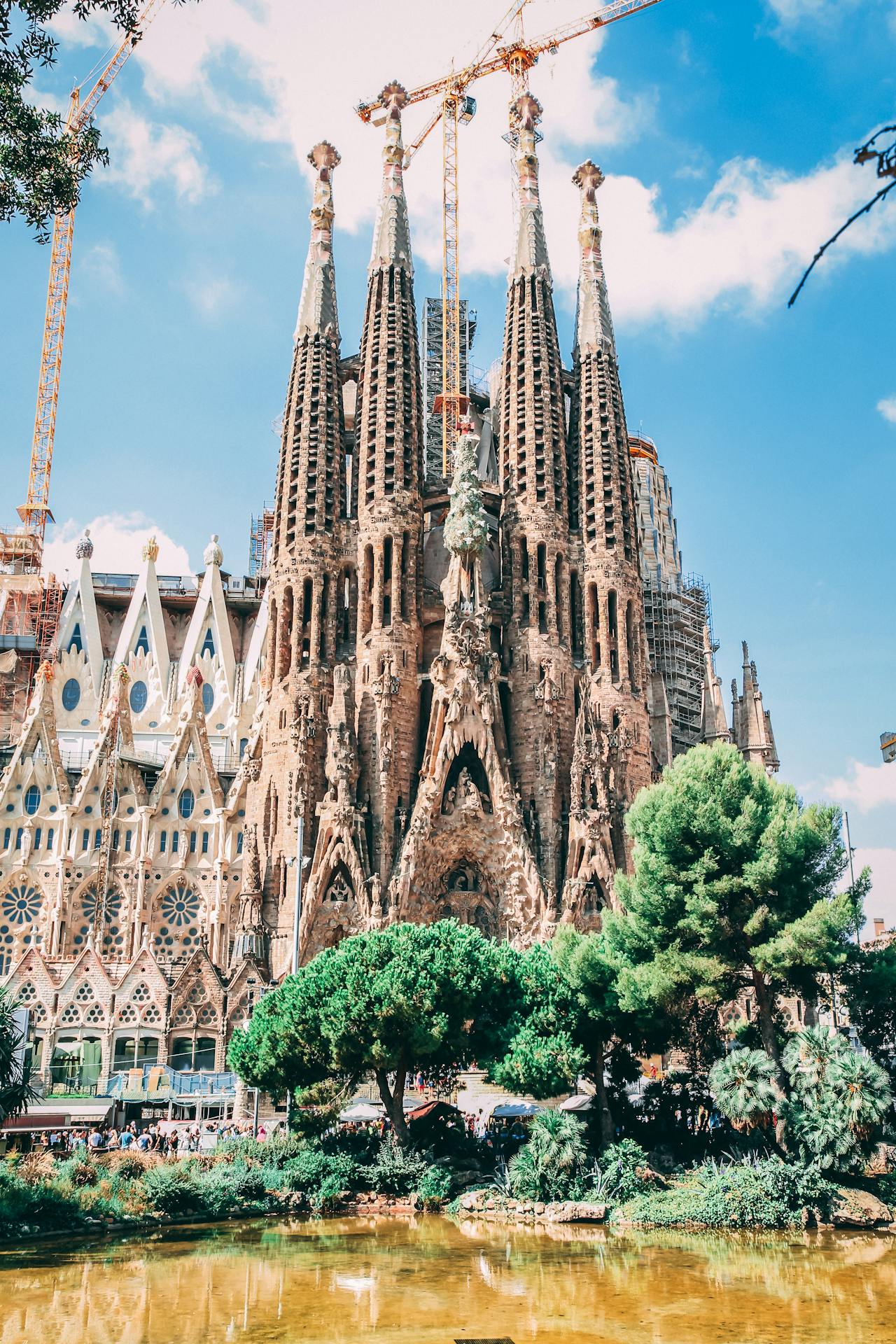Barcelona captivated me from the moment I stepped foot in this vibrant Catalan city. The unique blend of stunning architecture, rich culture, and mouthwatering cuisine makes it an unforgettable destination for any traveler.
Whether you’re marveling at Gaudí’s extraordinary Sagrada Família, getting lost in the winding streets of the Gothic Quarter, or sampling tapas at La Boqueria Market, Barcelona offers endless discoveries for first-time visitors.

I still remember my first day exploring this Spanish gem, where ancient Roman walls stand alongside modernist masterpieces. The city’s energy is infectious, with locals and tourists alike enjoying the Mediterranean lifestyle.
From the bustling La Rambla to the peaceful Park Güell, Barcelona strikes a perfect balance between urban excitement and relaxing spaces.
My advice for making the most of your first Barcelona trip? Don’t rush. Take time to soak in the atmosphere, try authentic Catalan dishes, and venture beyond the main tourist spots.
The magic of Barcelona isn’t just in its famous landmarks but in the everyday moments – sipping coffee at a sidewalk café, watching street performers, or catching a sunset view from Montjuïc hill.
Unveiling the Architectural Wonders
Barcelona’s skyline is defined by architectural masterpieces that tell stories of innovation, history, and artistic vision. The city stands as Antoni Gaudí’s open-air museum while also preserving centuries of Gothic splendor.
The Exemplary Sagrada Família
The Sagrada Família left me speechless when I first saw it. This UNESCO World Heritage site isn’t just a church—it’s Gaudí’s unfinished magnum opus that’s been under construction since 1882.
The exterior features three dramatic façades: Nativity, Passion, and the still-incomplete Glory. Each tells biblical stories through intricate stonework that seems to come alive.
Inside, I was mesmerized by the forest-inspired columns and kaleidoscopic light streaming through stained glass windows. The effect transforms throughout the day as sunlight shifts position.
Pro tip: Book tickets online at least two weeks in advance and include tower access for breathtaking city views. Morning visits offer the best lighting for photographs, especially when sunlight illuminates the eastern façade.
Passeig de Gràcia’s Iconic Structures
Walking down Passeig de Gràcia feels like strolling through an architectural textbook. This elegant boulevard houses some of Gaudí’s most celebrated works.
Casa Batlló captured my imagination with its dreamlike façade resembling dragon scales and bones. The building’s organic shapes and vibrant mosaics exemplify Gaudí’s nature-inspired approach.
Just blocks away stands Casa Milà (La Pedrera), with its undulating stone façade and twisted iron balconies. The rooftop is otherworldly—featuring soldier-like chimneys and ventilation towers that look like something from a sci-fi film.
Both buildings offer excellent audio guides that explain how these revolutionary designs shocked Barcelona’s early 20th-century society while becoming treasured landmarks today.
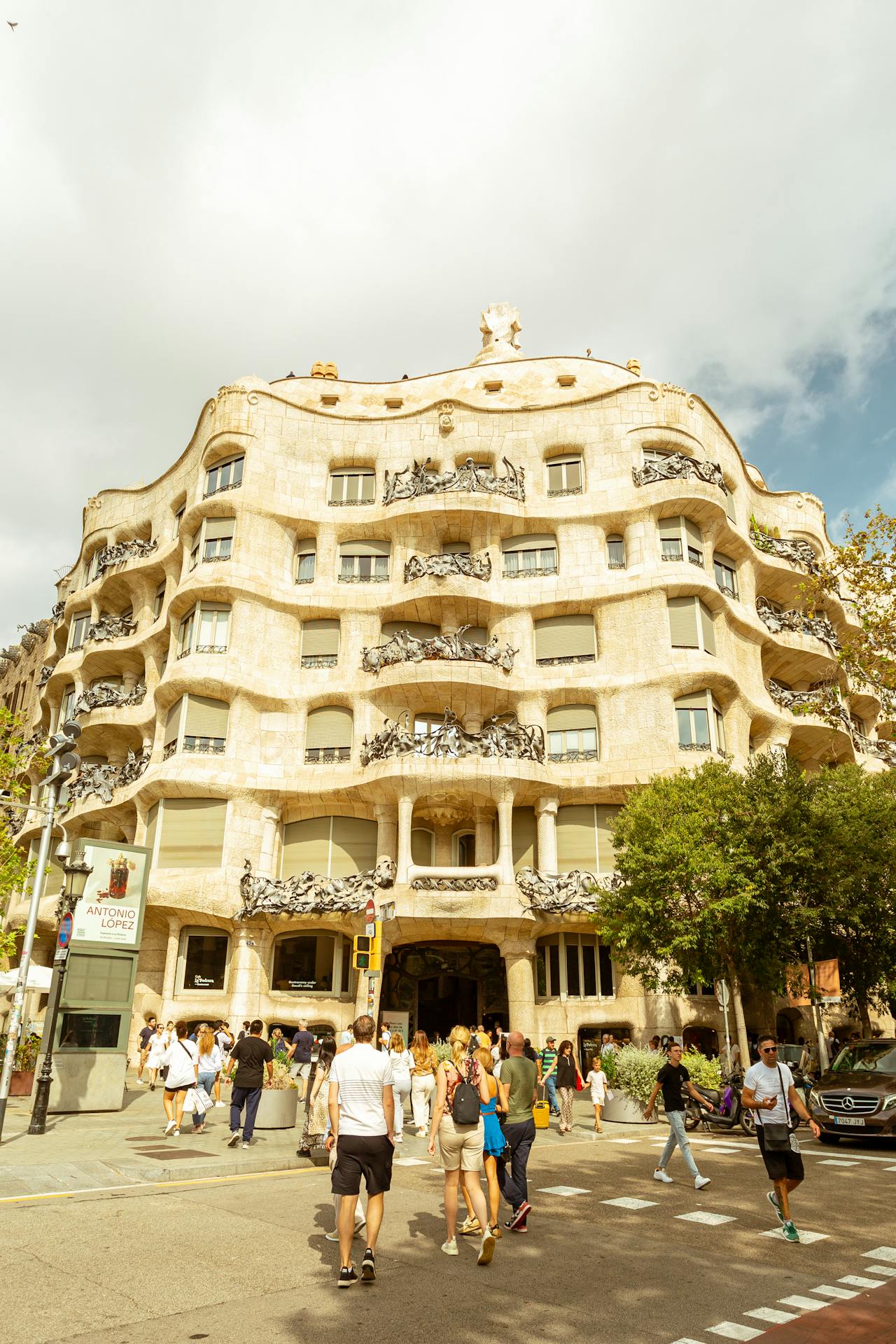
Gothic Quarter: A Walk Through History
The Gothic Quarter (Barri Gòtic) transported me to medieval Barcelona through its labyrinthine streets and hidden plazas. This ancient neighborhood contains layers of history dating back to Roman times.
Barcelona Cathedral stands majestically at the quarter’s heart. Unlike Gaudí’s works, this Gothic masterpiece showcases pointed arches, flying buttresses, and intricate gargoyles. I found the peaceful cloister with its 13 resident geese particularly enchanting.
Wandering through narrow stone passages, I discovered Roman walls, hidden courtyards, and buildings with stories spanning centuries. Plaça del Rei and Plaça Sant Felip Neri are must-visit spots that capture the quarter’s medieval essence.
The area comes alive at night when illuminated facades create dramatic shadows on cobblestone streets. Morning visits offer quieter exploration before tourist crowds arrive.
Culinary Delights and Dining Experience
Barcelona’s food scene combines traditional Catalan flavors with innovative culinary approaches, making it a paradise for food lovers. The city offers everything from casual tapas bars to Michelin-starred restaurants.
Tapas Hopping in El Born
El Born is my favorite neighborhood for authentic tapas hopping. This trendy district features narrow medieval streets lined with some of Barcelona’s most beloved tapas bars.
I recommend starting at El Xampanyet, a bustling classic spot known for its house cava and anchovy-topped bread. The atmosphere is lively, with locals and visitors mingling at crowded tables.
For modern Catalan tapas, Bormuth offers delicious patatas bravas and gambas al ajillo (garlic shrimp) that still make my mouth water when I think about them. Their selection of local wines pairs perfectly with small plates.
Don’t miss Cal Pep if you can brave the wait. Their seafood tapas showcase the Mediterranean’s finest catches, prepared simply but masterfully before your eyes at the counter.

Seafood and Cava by the Barceloneta Beach
Barceloneta’s waterfront restaurants serve the freshest seafood in Barcelona, often paired with local cava or crisp white wines.
I love spending afternoons at La Cova Fumada, a hole-in-the-wall spot credited with inventing the bomba (potato croquette with spicy sauce). Their daily catch arrives straight from the fishing boats docked nearby.
For paella, Can Majó serves a spectacular seafood version that rivals any in Spain. Request a table on their terrace for views of the Mediterranean while you dine.
A perfect evening includes a sunset stroll along the beach followed by dinner at Barraca, where the seafood-forward menu highlights sustainable Mediterranean fish. Their fideuà (paella made with noodles instead of rice) is a must-try Catalan specialty.
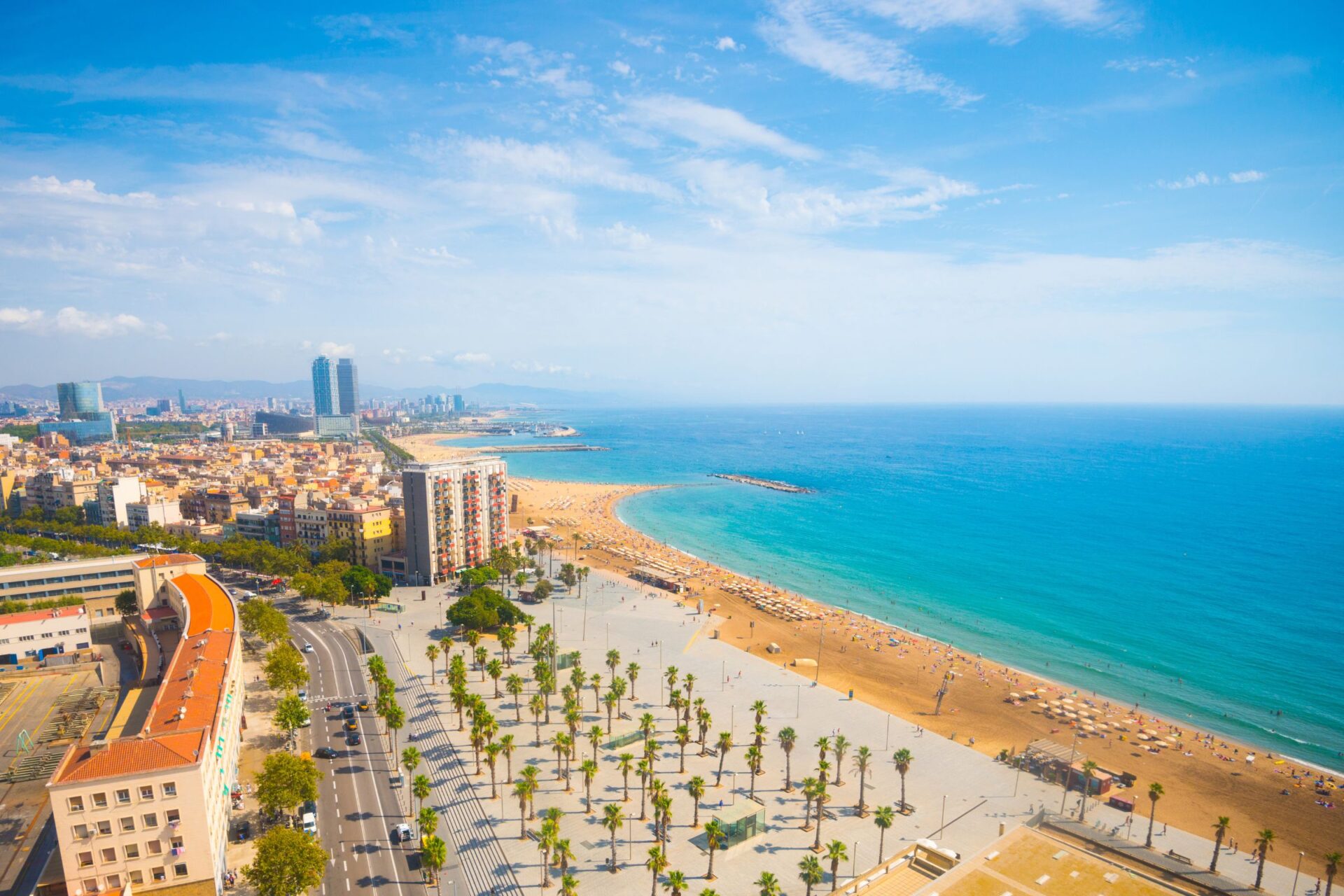
Boqueria Market: A Feast for the Senses
La Boqueria Market off Las Ramblas overwhelms the senses with colorful produce, hanging jamón, and the lively calls of vendors.
I always start my visit with a fresh fruit smoothie from one of the juice stalls near the entrance. The rainbow display of drinks makes for a perfect refreshment and photo opportunity.
The market houses several fantastic counter restaurants. El Quim de la Boqueria serves incredible egg dishes – their eggs with baby squid converted me instantly. Sitting at their bar watching the chefs work is part of the experience.
For a quick bite, grab cone-shaped paper filled with thin slices of jamón ibérico or local cheese. These portable snacks let you continue exploring while tasting authentic Spanish flavors.
Visit in the morning for the freshest selection and fewer crowds. Locals shop here daily, proving it’s not just a tourist attraction but a vital piece of Barcelona’s culinary culture.
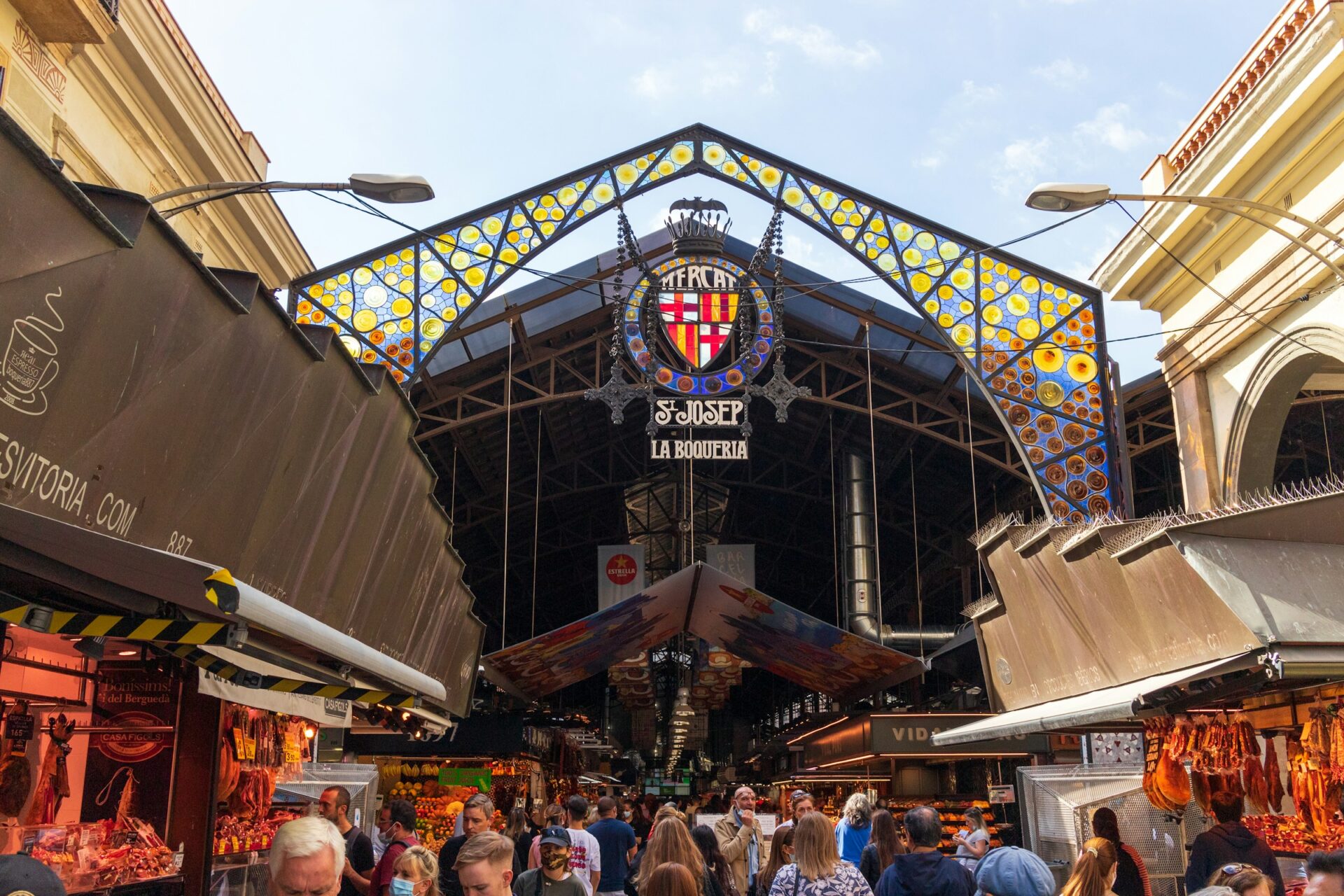
Exploring Barcelona’s Vibrant Streets and Squares
Barcelona’s streets and squares pulse with life, offering some of the best places to experience authentic Catalan culture. These vibrant public spaces showcase the city’s unique character through architecture, food, shopping, and people-watching opportunities.
La Rambla and its Street Performers
Walking down La Rambla was one of my favorite Barcelona experiences. This famous boulevard stretches for about 1.2 kilometers from Plaça de Catalunya to the Christopher Columbus Monument near the port.
During my stroll, I was mesmerized by the variety of street performers. Human statues painted in gold and silver held impossibly still poses, only moving when coins clinked into their collection boxes. Musicians filled the air with Spanish guitar melodies while caricature artists sketched tourists with exaggerated features.
The tree-lined pedestrian mall buzzes with activity day and night. I found the best time to visit was early morning when locals were shopping at La Boqueria market, or during early evening when the golden light bathes the promenade.
Be cautious with your belongings here though – pickpockets know tourists are distracted by all the action!

Plaça Reial’s Nighttime Buzz
Just steps off La Rambla, I discovered the magnificent Plaça Reial, a square that completely transforms after sunset. The palm-lined plaza with its central fountain feels like stepping into another era.
Gaudi designed the ornate lampposts here, one of his earlier works that’s easy to miss if you’re not looking up. The neoclassical buildings surrounding the square house some of Barcelona’s most popular nightclubs and tapas bars.
I loved sitting at one of the outdoor restaurant tables, sipping sangria while watching the plaza come alive. Street musicians often perform impromptu concerts, creating the perfect soundtrack for a Mediterranean evening.
The square gets particularly lively around 10pm when Barcelonians typically begin their evenings. For the best experience, I’d recommend arriving for dinner then staying as the nightlife scene develops.
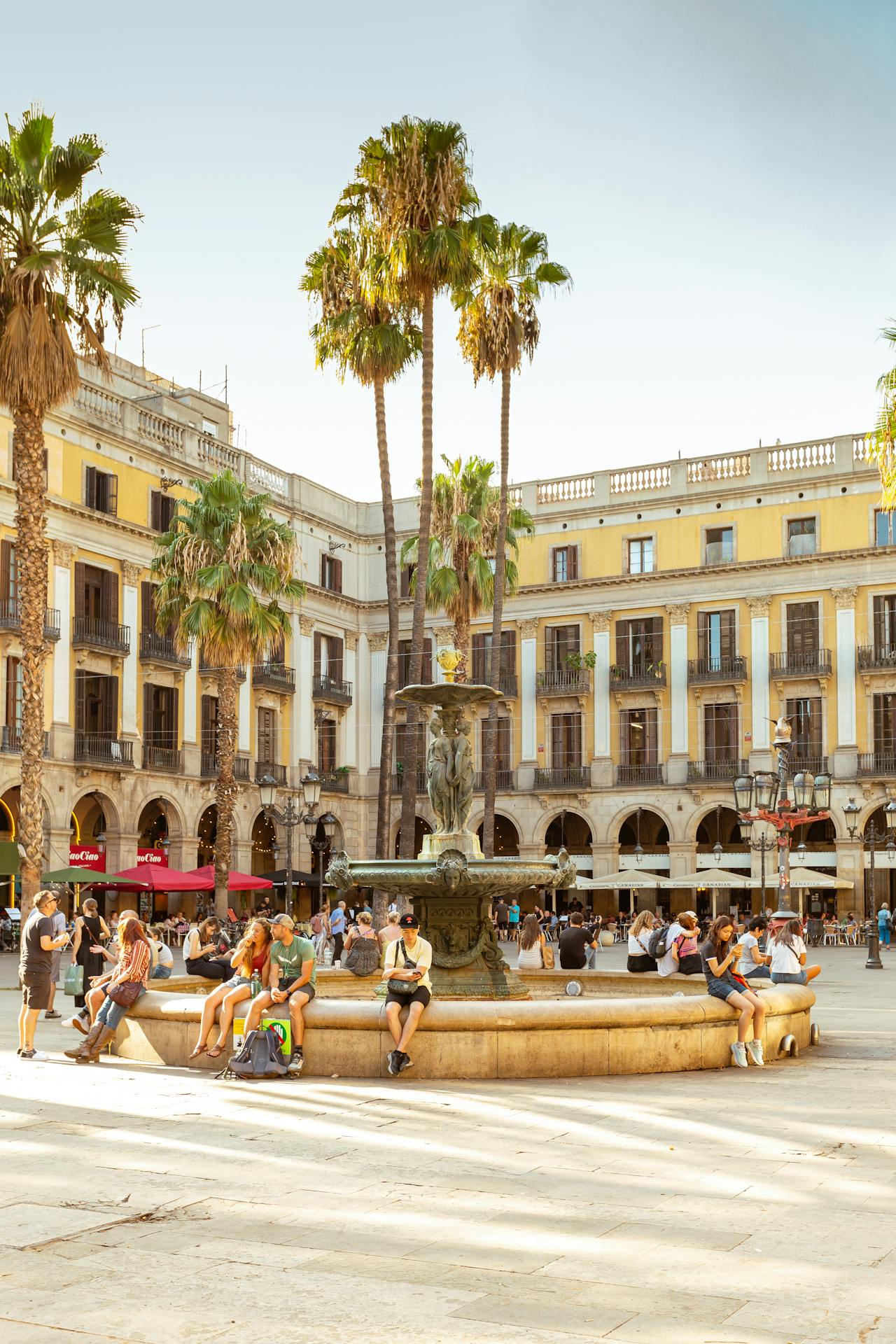
Rambla de Catalunya: Shopping and Strolling
When I needed a break from the tourist crowds, Rambla de Catalunya offered the perfect alternative. This elegant boulevard in the Eixample district runs parallel to the more famous La Rambla but offers a more upscale, relaxed experience.
The tree-lined street features wider sidewalks with outdoor cafés perfect for people-watching. I spent a delightful afternoon hopping between boutiques selling Spanish designer clothes and unique Catalan crafts.
What surprised me most were the whimsical modernist sculptures scattered along the promenade. My favorite was the playful “Giraffe Coquette” bronze statue by Josep Granyer.
For shopping enthusiasts, this area offers everything from mainstream brands to high-end luxury stores. I found the prices higher than other areas but the quality and shopping environment made it worthwhile.
The outdoor terraces here serve excellent tapas and coffee. I particularly enjoyed the specialty hot chocolate at Granja La Pallaresa—thick enough to stand a spoon in!
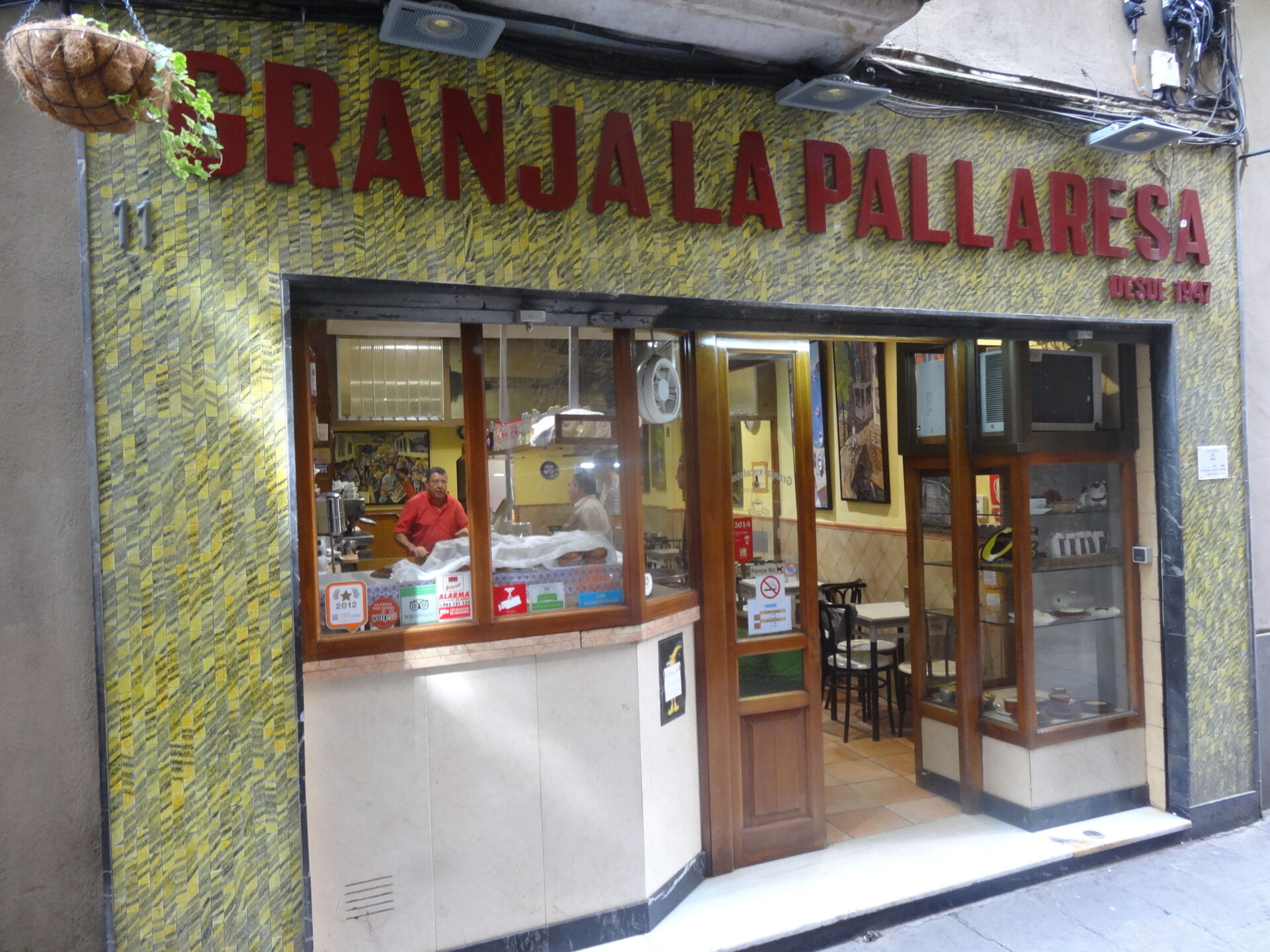
Cultural and Artistic Exploration
Barcelona’s artistic soul runs deep, offering visitors countless ways to experience its unique cultural heritage. From world-class museums to architectural masterpieces, the city presents art in forms that surprise and delight at every turn.hot chocolate at Granja La PallaresaBarcelona’s artistic soul runs deep, offering visitors countless ways to experience its unique cultural heritage. From world-class museums to architectural masterpieces, the city presents art in forms that surprise and delight at every turn.
Picasso Museum and Beyond
The Picasso Museum showcases the artist’s formative years when he lived in Barcelona. I was amazed by the comprehensive collection spanning his Blue Period works to his later interpretations of Velázquez’s “Las Meninas.” The museum is housed in five connected medieval palaces in the El Born district, adding historical charm to the experience.
Beyond Picasso, Barcelona offers a wealth of artistic experiences. The National Art Museum of Catalonia (MNAC) houses an impressive collection of Romanesque church paintings and modernist works that tell the story of Catalan art history.
For contemporary art lovers, MACBA (Barcelona Museum of Contemporary Art) features rotating exhibitions of cutting-edge works. The building itself, designed by Richard Meier, is a stark white contrast to the surrounding Gothic Quarter architecture.

Palau de la Musica Catalana: A Concert Hall Like No Other
Walking into the Palau de la Musica Catalana felt like entering a vibrant dream. This UNESCO World Heritage site is a masterpiece of Catalan modernism designed by Lluís Domènech i Montaner. The concert hall’s stained-glass skylight resembles an inverted dome of sunshine, bathing the space in colorful light.
The ornate interior features intricate mosaics, sculptural elements, and a stage backdrop dominated by sculptured Valkyries. Even if you can’t attend a performance, guided tours offer insight into this architectural gem.
I recommend trying to catch a concert here—whether classical, flamenco, or Catalan folk music. The acoustics are superb, and experiencing live music in this setting creates memories that last a lifetime. The Palau hosts over 500 concerts annually, so there’s likely something happening during your visit.
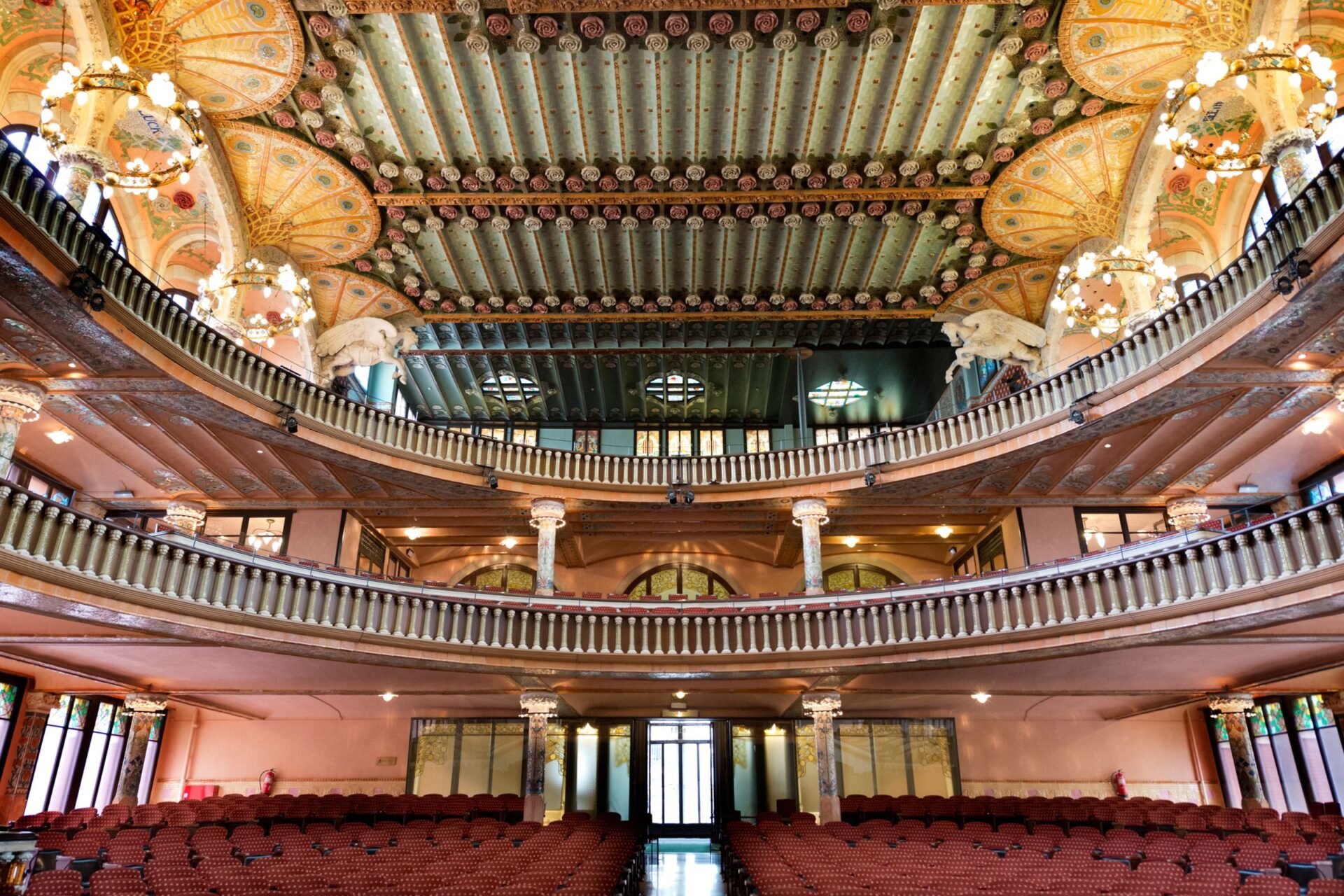
Hospital de Sant Pau: More Than a Medical Center
Just a short walk from Sagrada Familia lies a lesser-known modernist treasure: Hospital de Sant Pau. This functional hospital complex, designed by Domènech i Montaner, operated until 2009 and now serves as a cultural center and museum.
What struck me most was how beautiful a hospital could be. Each pavilion features distinct decoration with colorful tiles, sculptures, and stained glass—all designed to create a healing environment for patients. The main administration building showcases the architect’s attention to detail with its ornate facade and dome.
Underground tunnels connect the buildings, designed for transporting patients and supplies. These tunnels now house exhibitions on the hospital’s history and Barcelona’s modernist movement.
Unlike the crowds at Gaudí’s works, Sant Pau offers a more peaceful experience to appreciate modernist architecture. The gardens between pavilions provide perfect spots for quiet reflection and stunning photo opportunities.
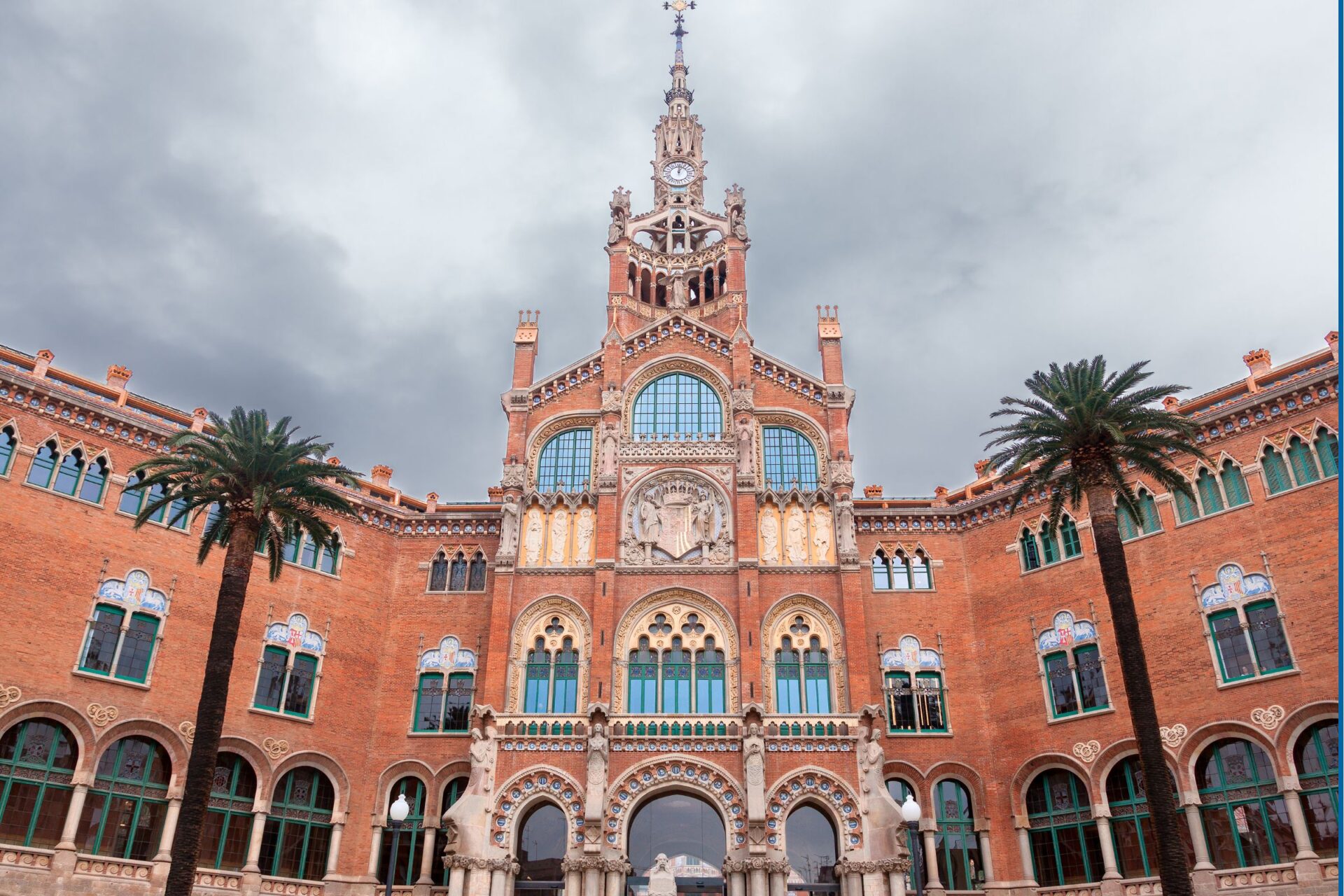
Panoramic Views and Natural Escapes
Barcelona offers stunning vantage points and green spaces where you can escape the urban hustle. These elevated spots provide breathtaking views of the city while offering a refreshing break from sightseeing.
Montjuïc: A Hilltop Haven
I always recommend Montjuïc as my first stop for panoramic views of Barcelona. This sprawling hill rises 173 meters above the harbor. It offers spectacular vistas of both the city and Mediterranean Sea.
The cable car ride up is an experience itself! Once at the top, you can explore Montjuïc Castle. It’s a 17th-century fortress with incredible 360-degree views.
Don’t miss the beautiful botanical gardens and the Olympic facilities from the 1992 Games. I find the Magic Fountain particularly enchanting. Time your visit for the evening light and music show.
Walking through the well-maintained parks here feels miles away from the busy city streets below. The various museums, including the National Art Museum of Catalonia, make this area perfect for a full day of exploration.

Park Güell’s Mosaic Marvels
Park Güell showcases Gaudí’s genius in combining architecture with nature. The colorful mosaic benches and the famous salamander statue (El Drac) are Instagram favorites, but there’s so much more to discover here.
I recommend arriving early to avoid crowds, especially in summer months. The main monumental zone requires tickets, but they’re worth it to see Gaudí’s incredible stone columns and undulating mosaic benches up close.
From the main terrace, the views of Barcelona are simply breathtaking. You can see all the way to the Mediterranean on clear days.
The surrounding free park area offers lovely walking paths through pine groves and gardens. I’ve spent hours wandering these quieter areas, sketching the unique architectural elements that appear around every corner.
Day Trip to Montserrat
Just an hour from Barcelona, Montserrat offers a complete change of scenery. Its jagged mountain peaks and spiritual significance make it a unique destination. The train journey itself provides beautiful views of the Catalan countryside.
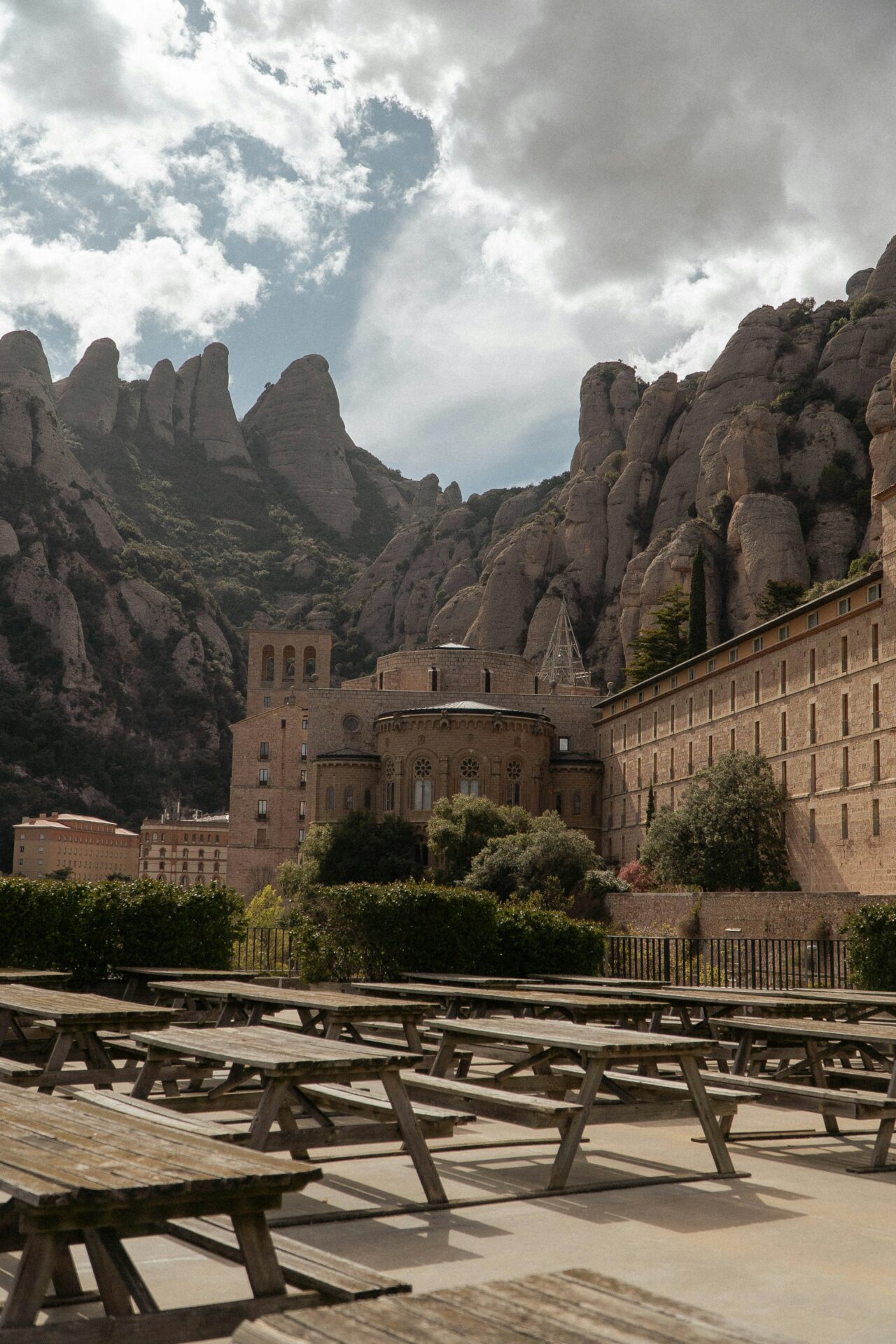
The Benedictine monastery houses the famous Black Madonna statue. Pilgrims travel from around the world to see it. I was moved by the boys’ choir performance (L’Escolania). Try to time your visit to catch their singing.
Hiking trails crisscross the mountain, ranging from easy walks to challenging climbs. The views from Sant Jeroni peak, the highest point at 1,236 meters, are absolutely worth the effort.
Before heading back, I always stop at the local market to try artisanal cheeses and honey produced by monks. The combination of natural beauty, cultural significance, and adventure makes Montserrat my favorite day trip from Barcelona.

